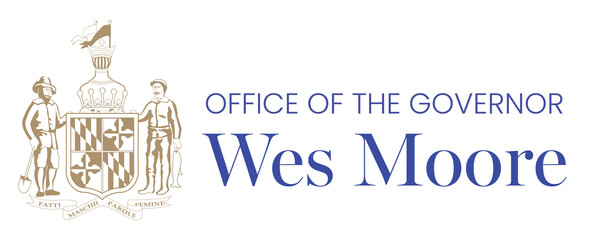|
June 07, 2023
Dear Subscriber,
 Governor Wes Moore announced increases in key targeted cargo at state-owned marine terminals at the Port of Baltimore during the first quarter of 2023. General cargo is up 8% and containers are up more than 7% compared to the first three months of 2022, and roll on/roll off farm and construction machinery is up 42% year over year.
“Maryland’s Port of Baltimore is one of the largest economic engines in the state, and that engine is now firing on all cylinders,” said Gov. Moore. “The maritime industry knows we have the critical tools they need: world-class infrastructure, state-of-the-art technology, outstanding leadership and the men and women of the hardest working longshore labor force in the business.”
The Port of Baltimore generates about 15,300 direct jobs, with nearly 140,000 jobs overall linked to port activities. The port is first among the nation’s ports for autos and light truck volume, roll on/roll off farm and construction machinery, and imported gypsum and is responsible for nearly $3.3 billion in personal wages and salaries, $2.6 billion in business revenue and $395 million in state and local tax revenue annually.
“Our operation at Maryland’s Port of Baltimore—our people, our partners, our logistics, our infrastructure and our dedication to service—gives customers tremendous confidence in our ability to bring their goods to market,” said Maryland Department of Transportation Secretary Paul J. Wiedefeld. “We have the total package, and it’s driving economic opportunity for Maryland and for our workers.”
The strong start to 2023 follows a watershed year in 2022 when the Port of Baltimore handled a record $74.3 billion worth of foreign cargo and established other new marks despite lingering worldwide supply chain issues and pandemic impacts to the international maritime shipping industry. The port’s terminals—including those managed by the Maryland Port Administration and private terminals—handled 43.3 million tons of cargo last year, nearly eclipsing the pre-pandemic 2019 record of 44.2 million tons.
“Our success is due to our one Port of Baltimore family,” said Maryland Port Administration/Port of Baltimore Executive Director William P. Doyle. “No other U.S. seaport has the cooperation from its full supply chain like Baltimore. Our private marine terminals, our great International Longshoremen’s Association, and our incredible truckers, pilots, tugs, freight forwarders, and terminal operators—we’re all a great team.”
The Port of Baltimore’s continued success relies on factors related to business, technology, community involvement and environmental stewardship. Recent milestones and achievements include:
-
Ultra-Large Cranes – Four additional Neo-Panamax, ultra-large cranes became operational at the Seagirt Marine Terminal. The port’s container business has grown under the public-private partnership with Ports America Chesapeake and is poised to grow more in the next several years. This past weekend, the Port of Baltimore set a record with 6,383 container moves off a single vessel, the Maersk Eindhorn, with the help of its extra-large cranes and 50-foot-deep-channel.
-
Welcome ZIM – ZIM Shipping Lines began its E-Commerce Baltimore Express service from China and Southeast Asia to the U.S. East Coast. ZXB was named for Baltimore. Earlier this year, Governor Moore announced ZIM would increase its service into Maryland from bi-weekly to weekly and increase the size of its ships coming to Baltimore by 50%.
-
Receiving Diverted Ships – With many U.S. ports experiencing port congestion and supply chain issues, the Port of Baltimore handled nearly 100 “ad hoc” ship calls during the recovery stages of the pandemic; the vessels were not on a regularly scheduled call.
-
Top Security Grade – For the 14th consecutive year, the port’s state-owned marine terminals received a top security grade during an annual assessment by the U.S. Coast Guard. The assessment focused on cyber security and reviewed security procedures and protocols at the six public terminals.
-
Mid-Chesapeake Bay Island Ecosystem Restoration – The Port Administration’s newest coastal restoration initiative will restore island habitat at James and Barren islands off the coast of Dorchester County and protect the shoreline. The project is a partnership with the U.S. Army Corps of Engineers and will use dredged sediment from Port of Baltimore shipping channels to rebuild the islands.
-
Community Outreach – The Port Administration’s Masonville Cove is one of Maryland’s largest environmental restoration projects and welcomes more than 2,000 local students and adults annually for hands-on and classroom-based environmental learning. The Port Administration also has worked with communities to plant hundreds of trees in neighborhoods and is a proud partner of the Ministers Conference Empowerment Center of Baltimore’s Cradle to Career Pipeline, which provides youth and adult career counseling and workforce training at employment centers including the port.
The expansion of the CSX-owned Howard Street Tunnel will enhance port commerce. The project will allow for double-stacked container cars, giving the East Coast seamless double-stack capacity from Maine to Florida. The project will improve the 127-year-old tunnel and 21 other locations between Baltimore and Philadelphia.
Following completion in 2025, Baltimore will be able to send double stacked containers by rail into the Ohio Valley and onto Chicago. The project benefits from public-private investment from the federal government, Maryland, CSX and others and is expected to increase port business by about 160,000 containers annually, generating an estimated 6,550 construction jobs and 7,300 jobs from the increased business.
###
|